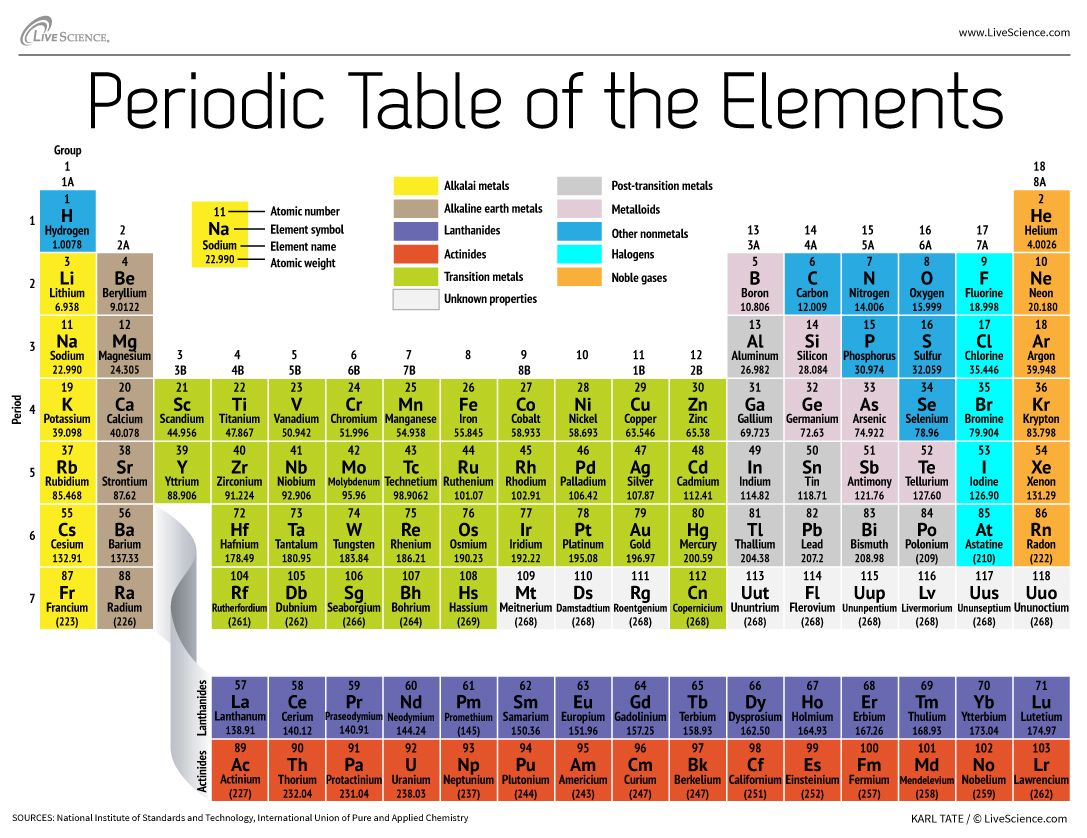How Do Chemists Organize Information About Elements
Which one has larger atoms which one has a higher first ionization energy which one has the higher electronegativity and which type of ion. Periodic or repeating patterns of physical and chemical properties are crucial to the organization of the table.
The Periodic Table Chemistry For Majors
Who was the first chemist to organize elements by atomic number.
. In his system elements were grouped into triads. A temporary magnet can be made by using electricity. Chemists and materials scientists study substances at the atomic and molecular levels and analyze the ways in which the substances interact with one another.
In the modern periodic table elements are arranged in order of increasing atomic number name the three broad classes of elements. A logical way to organize the elements. A triad is a set of three elements with similar properties.
For example lets take a look at Mendeleevs original 1869 periodic table. Chemists and materials scientists typically do the following. The atomic number is the number of protons in an atom of that element.
One such triad was lithium sodium and. Elements are first organized by atomic number left to right top to bottom. Elements were now ordered by atomic number the number of positively charged particles called protons in the atomic nucleus rather than by atomic mass but still also by chemical similarities.
What Chemists Do. They are organized into columns by their properties. In 1829 a German chemist J.
Most non-metals were gases and liquids brittle and poor conductors of heat and electricity. Every element has its own unique atomic mass number because elements have different numbers of protons and neutrons. A single document that consolidates much of our knowledge of chemistry.
The periodic table of the elements is one of the most powerful icons in science. The table can be used to predict the properties of elements even those that have not yet been discovered. Mendeleev arranged the elements in his periodic table in order of increasing atomic mass.
A version hangs on the wall of nearly every. An element in an A group in the periodic table. A logical way to begin grouping elements together was by their chemical properties.
Pekka Pyykkö a theoretical chemist at the University of Helsinki calculated electron configurations up to element 172 and made a table for them Phys. The periodic table is an icon. All magnets contain an invisible electromagnetic field which surrounds the magnet.
In their atoms the s. Mendeleev arranged the elements in his periodic table in order of increasing atomic mass. Through use of the scientific method D.
In the modern periodic table elements are arranged in order of increasing atomic number. Given an elements position on the periodic table be able to provide information about the elements electron configuration especially the outer energy level. Scientists then came up with the idea that they could arrange the element by the atomic mass number.
Chemistry information also needs to be organized so we can see patterns of properties in elements. Until a new element is discovered the last element on the table is element number 118. To summarize the periodic table is important because it is organized to provide a great deal of information about elements and how they relate to one another in one easy-to-use reference.
These patterns even allowed scientists in the past to predict the properties of as of yet undiscovered elements just by looking at gaps in the table. Based on the information provided above how would you describe a magnet. Dobereiner 17801849 published a clas-sification system.
In other words putting elements in separate groups based on how they reacted with other elements In 1829 a German chemist Johann Dobereiner 1780-1849 placed various groups of three elements into groups called triads. Scientists then came up with the idea that they could arrange the element by the atomic mass number. Today 150 years later chemists officially recognize 118 elements after the addition of four newcomers in 2016 and still use Mendeleevs periodic table of elements to organize them.
Chemists used the properties of elements to sort them into groups. Every atom of element 118 has 118 protons. The elements in Figure 61 formed one triad.
Every atom of hydrogen has 1 proton. As a group these elements display a wide range of physical and chemical properties. The table lists the chemical elements in order of increasing atomic number which is the number of protons in an atom of an element.
When given a pair of elements in either the same series or group. It is a masterpiece of data visualization. Be able to tell.
So element number 1 hydrogen is the first element. There are many uses for magnets from holding doors closed to helping music sound better with the magnets inside of speakers. Elements are listed in numerical order by atomic number.
They use their knowledge to develop new and improved products and to test the quality of manufactured goods.

How The Periodic Table Organizes The Elements Chemistry Basics Youtube

The Periodic Table Boundless Chemistry

Chemistry Jokes Riddles Periodic Table Of Elements Sym Chemistry Jokes Jokes And Riddles Biology Humor

Comments
Post a Comment